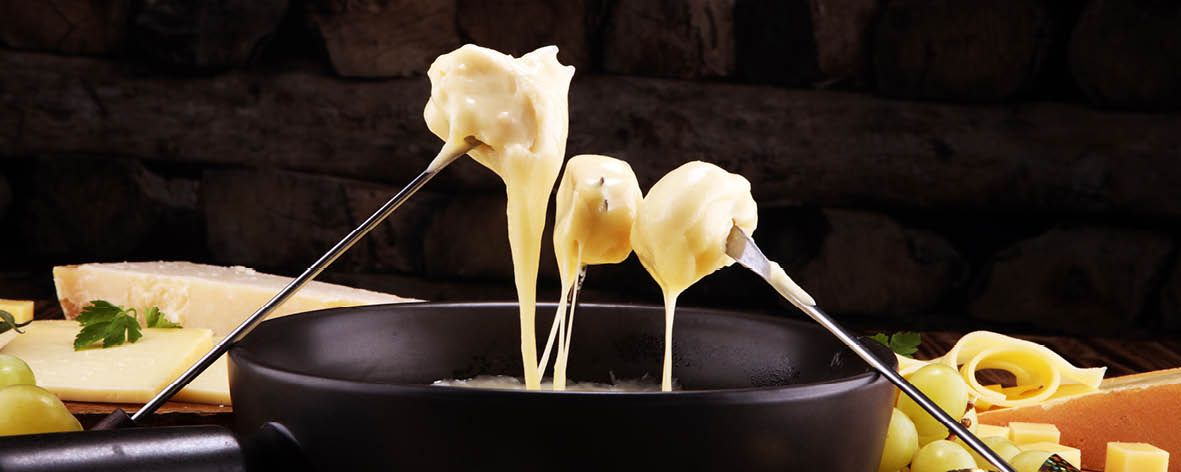Cheese … don’t mind if I fondue

Are you a cheese lover? Do you daydream about D’Affinois, get giddy over gorgonzola or fantasise about feta? Then fondue is the dish for you! We’ve taken a deep dive into the world of fondue in honour of the upcoming Cheese Fondue Day on 11 April.
Originating in Switzerland, fondue is a dish made by combining wine, cognac or brandy with cheese in a pot that is heated from below, to melt the cheese. Other flavours can be added to enhance the taste including garlic, seasoning and spices. Once melted, fondue is eaten by dipping hunks of bread into the cheese using long forks. As well as bread you can use other foods for dipping, including vegetables and pieces of cooked meat (note that meat should be cooked as the cheese fondue is not hot enough to cook it).
Fondue is the national dish of Switzerland where it was created as a way of using hardened cheese and stale bread during the cold winter months. The first known recipe for cheese fondue was in 1699 in a book published in Zurich. In the 1960s and 70s fondue became universally known and popular after it was introduced to Americans at the 1964 New York World’s Fair. Traditionally Swiss cheeses like gruyere and Emmental are used to make fondue, but you can use other types of cheese; in France Comté is frequently used and in Italy, Fontina is popular.
Over the years, the cheese fondue idea has evolved into other types of food, the most common of which is chocolate fondue. Pieces of fruit, pastry, marshmallows, cake and biscuits are dipped into a pot of melted chocolate for a deliciously indulgent treat.
Traditionally fondue is made in a pot on the stove and then moved to the table where it is kept warm by a small candle underneath the communal pot. Over the years a range of traditions have developed around eating fondue, including that if you drop your bread in the pot you must buy a round of drinks or in colder climates than ours, run naked in the snow!

